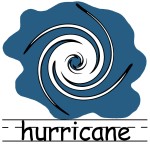 As some of you may be aware Philadelphia is expected to get slammed by Hurricane Sandy. This storm has the potential to be the “Storm of the Century”. Right now it is projected to enter the Delaware Bay as a full Hurricane and break land at the mouth of the Delaware River. To make matters worse a winter storm from the west and an arctic blast from the north are expected to collide with the hurricane.
As some of you may be aware Philadelphia is expected to get slammed by Hurricane Sandy. This storm has the potential to be the “Storm of the Century”. Right now it is projected to enter the Delaware Bay as a full Hurricane and break land at the mouth of the Delaware River. To make matters worse a winter storm from the west and an arctic blast from the north are expected to collide with the hurricane.
Needless to say this could prove to be an extremely dangerous storm. We are keeping a close eye on the storm but it appears that there is an extremely high probability that our Halloween Party will be cancelled. Since the storm could change course at any time, we will withhold a final decision for now but it is looking pretty certain.
While this is, and rightfully so, a scary time for some it is a prime teaching opportunity for your family, and particularly your scout. A storm like this stresses the importance of being prepared because Hurricanes can wipe out power, fuel sources as well as water supplies. The Boy Scout motto is “Be Prepared” and the Cub Scout motto is “Do Your Best”. A time like this is a time to do your best in getting prepared.
PREPARING
First, know where your local shelters are. While the most popular shelters will be announced keep in mind that many of the older public and parochial schools have fallout shelters. While these shelters were intended for safety during an attack they serve as great storm shelters. Contact your local schools to see if they will be allowing access to their shelters in the event your family feels unsafe at home.
HOME PREP
Here is some lists a list of items to assist you with preparing to weather out the storm
Water
- 3 gallons/person, minimum
(in food grade plastic containers) - Additional water for sanitation
Food
Minimum three-day supply of non-perishable foods that require no refrigeration, little to no prep, and little to no water.
- Dry cereal
- Peanut Butter
- Canned Fruits
- Canned Vegetables
- Canned Juice
- Ready-To-Eat canned meants
- Ready-To-Eat soups (not concentrated)
- Quick energy snacks, graham crackers, saltines, etc..
First Aid
Create one for your home and one for each car.
- Scissors
- Thermometer
- Tweezers
- Needle
- Sunscreen
- Cleansing agent/soap
- Latex gloves (2 pair)
- Tongue blades (2)
- Moistened towelettes
- Assorted safety pins
- 2″ sterile gauze pads (4-6)
- 4″ sterile gauze pads (4-6)
- 2″ sterile roller bandages (3 rolls)
- 4″ sterile roller bandages (3 rolls)
- Triangular bandages (3)
- Petroleum jelly or other lubricant
- Sterile adhesive bandages in assorted sizes
- Antibiotic ointment
- Eye wash solution to flush the eyes
Non-prescription drugs
- Laxative
- Anti-diarrhea medication
- Aspirin and/or non-aspirin pain reliever
- Antacid
- Activated charcoal (use if advised by poison control)
- Syrup of Ipecac (use if advised by poison control)
For Baby
- Formula
- Bottles
- Powdered Milk
- Diapers
- Medication
- Moist towelettes
- Diaper rash ointment
For Pets
- Food
- Leash, harness or carrier
- Records of vaccinations
- non-tippable food and water containers
Basic Disaster Kit
- Battery powered or hand crank radio, extra batteries
- Battery powered or hand crank NOAA weather radio with tone alert, extra batteries
- Flashlights, extra batteries
- Dust masks to help filter contaminated air
- plastic sheets and duct tape to shelter-in-place
- local and regional maps
- cell phones with chargers, inverters or solar chargers
- Emergency reference materials such as first aid book.
- Household Chlorine bleach (do not use scented, color safe or additives)
Sanitation
- Disinfectant
- Soap, liquid detergent
- Feminine supplies
- Toilet paper, towelettes, paper towels
- Plastic garbage bags, ties (for personal sanitation)
- Household chlorine bleach
- Personal hygiene items
- Plastic bucket with tight lid
Family Medical Needs
- Insulin
- Prescription drugs
- Denture needs
- Extra eye glasses
- Contact lenses and supplies
- Heart and high blood pressure medications
Clothing and bedding
- Blankets or sleeping bags
- One complete change of clothing and footwear per person
- Rain gear
- Sturdy shoes or work boots
- Thermal Underwear
Important family documents
- Important telephone numbers
- Record of bank account numbers
- Family records (birth, marriage, death certificates)
- Inventory of valuable household goods
- Copy of will, insurance policies, contracts, deeds, stocks and bonds
- Record of credit card account numbers and companies
- Copy of passports, social security cards, immunization records
Tools and Supplies
create one for your home and one for each car
- Whistle (to signal for help)
- Crowbar
- Fire Extinguisher
- flashlights and extra batteries
- Paper, Pencil
- Medicine Dropper
- Needles, thread
- Signal Flare
- Assorted nails, wood screws
- Plastic storage containers
- Cash or traveler’s checks, change
- Tape, duct and plumber’s tape or strap iron
- Patch kit and can of fix-a-flat for tires
- Shutoff wrench, to turn off utilities
- Aluminum foil
- Plastic sheeting
- Compass
- Matches in waterproof container
- Pliers, screwdriver, hammer
- Heavy cotton or hemp rope
- Non-electric can opener, utility knife
- Mess kits, or paper cups, plates and plastic utensils
- Map of the area.
Entertainment
- Games and books
Cold weather
Naturally a complete change of clothing including a long sleeved shirt, long pants and sturdy shoes is recommended but consider additional clothing if you live in a cold-weather climate. Living in a cold climate, you must think about warmth. It is possible that you will not have heat. Think about your clothing and bedding supplies.
Notes on Bleach Use
If you dilute bleach; 9 parts water to 1 part bleach it can be used as a disinfectant. In an emergency, you can use 8 drops of bleach per gallon of water to sanitize for drinking. If the water is cloudy use 16 drops. It is important that you use bleach without any additives. No scents, color safe or other cleansers. Here is a chart put out by the Washington State department of health.
Treating Water with a 5-6 Percent Liquid Chlorine Bleach Solution |
||
| Volume of Water to be Treated | Treating Clear/Cloudy Water: Bleach Solution to Add |
Treating Cloudy, Very Cold, or Surface Water: Bleach Solution to Add |
| 1 quart/1 liter | 3 drops | 5 drops |
| 1/2 gallon/2 quarts/2 liters | 5 drops | 10 drops |
| 1 gallon | 1/8 teaspoon | 1/4 teaspoon |
| 5 gallons | 1/2 teaspoon | 1 teaspoon |
| 10 gallons | 1 teaspoon | 2 teaspoons |

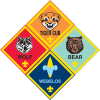
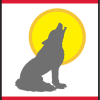
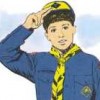


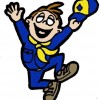
Speak Your Mind
You must be logged in to post a comment.